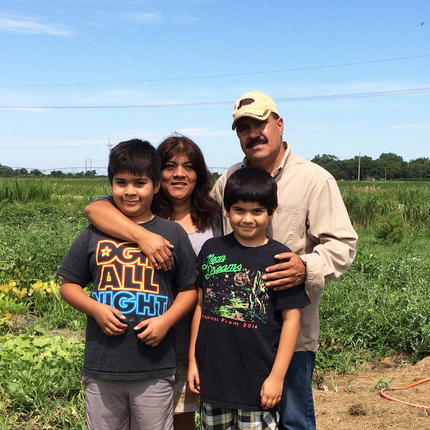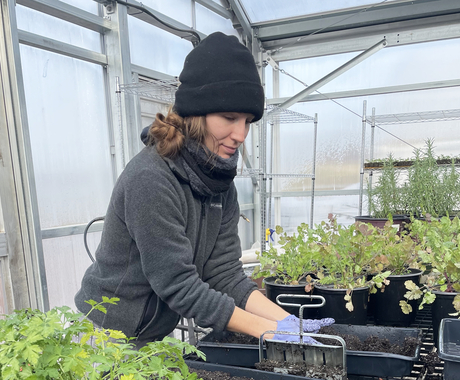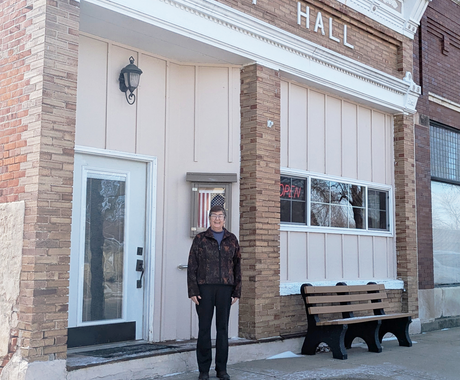Para la versión en español de esta historia, por favor oprima aqui.
Once full of tall grasses and pine trees, an acreage surrounded by corn on the outskirts of Fremont, Neb., now offers a food oasis.
Hilda Moreno and her husband, Carlos Alvarado Vega, are beginning Latino farmers. The couple purchased the farm two years ago and, at the request of their sons, started a small-scale poultry business focused on egg production.
They wanted better, fresher food, so Hilda took the challenge to lead the change toward better food by growing it themselves.
A little hard work - clearing the brush like a modern-day pioneer - was all it took to transform their jungle. Carlos has been transplanting pine trees to create windbreaks, and has planted a mix of pear, apple, plum and peach trees.
On Los Dos Potrillos, they raise chickens, pheasants, geese and goats. There is an 80-foot by 40-foot plot of sweet corn, and another 40-foot by 60-foot plot with serrano peppers, potatoes, musk melons, watermelons and tomatoes. Future goals include bringing in bees and hives for honey, selling goat meat and expanding the vegetable operation.
Another future goal is to diversify their market, possibly tapping into the school market.
Hilda recently attended a Center for Rural Affairs farm to school training held at the Nebraska School Nutrition Association conference in Kearney, Neb., to learn more about what it will take to get their products into schools.
She joined a panel of food producers alongside her Center interpreter, Lucia Schulz, to share her farming story with almost 50 school food service staff.
Hilda agreed she may need to adjust production plans to meet school needs and desires, and she dove in with thoughts on the diverse products they could offer and their ability to scale up current production.
This is a story of opportunity. But it’s important to address a commonly cited barrier: farmers and schools speak different languages. Check out this guide for schools and farms interested in engaging and exploring these kinds of local food procurement conversations. Asking the types of questions the guide suggests will open doors that may have previously been closed.
The responsibility lies in the hands of both the school food service staff and administrators, and our local farmers to explore opportunities that will benefit communities, kids and farmers equally.
Hilda’s next steps include connecting with local food distributors, like Nebraska Food Cooperative, who also served on the conference farmer panel, to learn about options for distributing their products and making the school connection.
We look forward to 2017 and seeing how Los Dos Potrillos grows to meet local food demand. There will be many lessons we can learn from this diverse and courageous farm business.





